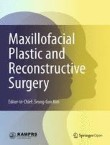A novel method for the management of proximal segment using computer assisted simulation surgery: correct condyle head positioning and better proximal segment placement
Computer Assisted Simulation Surgery (CASS) is a reliable method that permits oral and maxillofacial surgeons to visualize the position of the maxilla and the mandible as observed in the patient. The purpose o...
